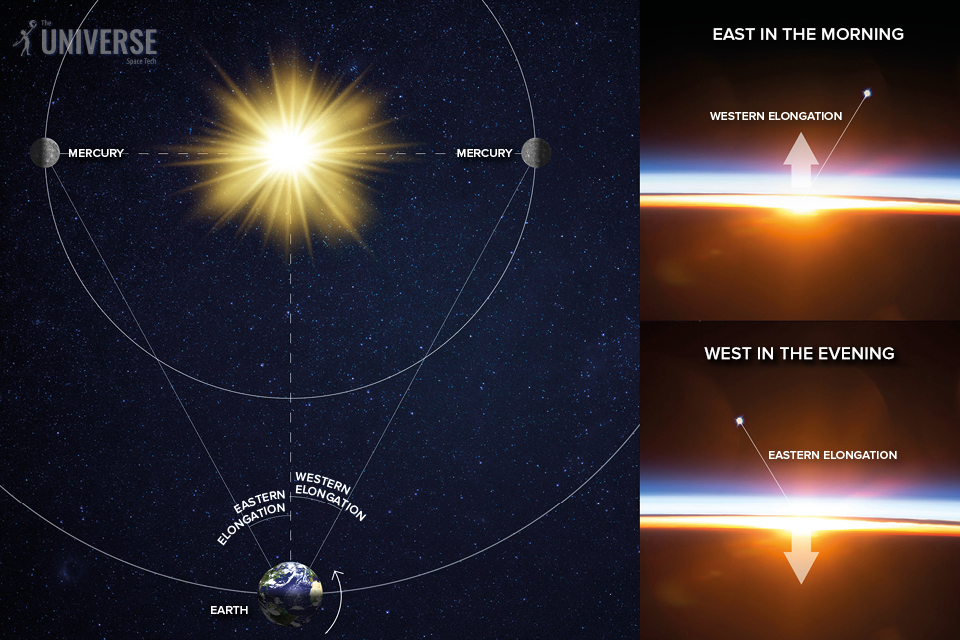On May 29, Mercury will be in the greatest western elongation. Since people have often been interested in what is happening in the sky, we decide to tell you what it is and whether to expect any changes from it in your earthly life.

1. What is elongation?
Elongation is an astronomical term that denotes the visible distance of a planet, comet or asteroid from the Sun in the Earth’s sky. A more precise definition is the angle between the directions to the centers of two celestial bodies for an earthly observer.
In opposition, the elongation of the planet approaches 180°, although it almost never reaches this value: since the planetary orbits are inclined to the ecliptic, the Earth very rarely appears exactly on the same straight line between the planet and the Sun. On the contrary, if a celestial body passes through the solar disk, its elongation approaches zero.
2. Why do people pay so much attention to the elongation of Mercury?
Elongation can be measured for any planet in the Solar System at any time. However, in most cases, it is remembered when it comes to Venus and Mercury. Only these two planets can be observed against the background of our luminary, and they never move away from it in the sky more than by a certain maximum angular distance determined by the size of their orbits.
Mercury has the smallest orbit size, which is why it is too close to the Sun for a significant part of the time to be comfortably viewed through a telescope. That is why maximum elongation is the best time to observe it.
3. What is the difference between eastern and western elongation?
Eastern and western elongation differ precisely in what their names say. During the western elongation, the planet is located west of the Sun, during the eastern one it moves away from it to the east.
In the case of Mercury and Venus, this also determines the time of observation of celestial bodies. With the eastern elongation, they can be seen in the evening shortly after sunset, approximately above the place where it has just set, and with the western one, they should be searched for early in the morning, above the part of the horizon where it should rise.
4. What interesting things can be seen in the sky?
On May 29, Mercury will undergo the maximum western elongation. This should mean the best conditions for its observation. But do not forget that the planets are moving near the ecliptic, and it is now located in such a way that in the morning it rises from the sunrise point in a southerly direction very slowly. Therefore, Mercury, located to the west of the luminary, will appear above the horizon a few minutes before its sunrise, and it will be extremely difficult to see it.
It is also difficult to see in our latitudes the eastern elongations of Mercury in autumn, when “low” zodiac constellations such as Scorpio and Sagittarius culminate in the evenings. On the contrary, the spring evening elongation of the smallest planet, which took place on April 11, was quite convenient for observations, although the angular distance between Mercury and the Sun barely exceeded 19°.

5. How will the maximum elongation of Mercury affect events on Earth?
Mercury makes one orbit around the Sun in just 88 Earth days. This means that the maximum elongation in the Earth’s sky — eastern and western — it can take place up to seven times a year. Obviously, this phenomenon cannot be called unique.
The maximum elongation of Mercury does not mean that it becomes special, or somehow approaches the Earth or the Sun. It’s just a certain configuration of three celestial bodies. Therefore, there is no reason to worry about the fact that it will somehow affect at least some earthly events.
Follow us on Twitter to get the most interesting space news in time
https://twitter.com/ust_magazine

